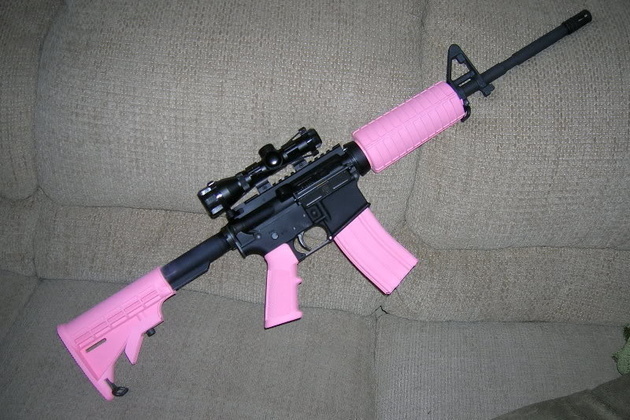I am somewhat of a beer snob. I like beer, and all of the nifty styles that barely, hops, yeast, and water can make. I always get asked what my favorites are, so... I tried to put them down. These are what my favorites are RIGHT NOW. That could change tomorrow with the discovery of a new brew.
I have some styles that have a single stand out, and some that tie.
This list represents beers that I personally like. It is my list. Others will have other lists. I'm not saying that other brews are bad, only that these brews appeal to my tastes.
It will be plain to see that I like certain breweries. Sierra Nevada clearly comes out as one of my very favorite breweries. As does Anchor and Great Divide. They make good beers!!
I tend to like the American style of brewing. American styles tend to use a stronger hop blend than the other styles and a very much like that. The styles I have represented are ones that I like. I have tried nearly all of the recognized styles and there are some that I just don't care for, such as the many English styles. It's not that these styles are bad, its just that I would choose something else, typically from the American or German styles, over something from the English styles. Which is interesting because many of the American styles are directly English in origin.
What are my favorite styles??? Tough question... Right now, I would say my very favorite styles are the American Pale Ale, the American IPA, and the Saison/Farmhouse Ale.
Many thanks to
Beer Advocate for their descriptions!!!!
Ales
Ale is a type of beer brewed from malted barley using a warm fermentation with a strain of brewers' yeast. The yeast will ferment the beer quickly, giving it a sweet, full bodied and fruity taste. Most ales contain hops, which help preserve the beer and impart a bitter herbal flavor that balances the sweetness of the malt.
American Styles
American Blonde Ale
More or less a creation from the craft-brewery movement, and also reminiscent of the German style Kölsch. Pale straw to deep gold for color. Usually an all malt brew, well attenuated with a lightly malty palate. Most have a subdued fruitiness. Hop character is of the noble variety, or similar, leaving a light to medium bitterness. A balanced beer, light bodied and sometimes lager like.
- Real Ale Brewing Company Fireman's #4
American Brown Ale
Spawned from the English Brown Ale, the American version can simply use American ingredients. Many other versions may have additions of coffee or nuts. This style also encompasses "Dark Ales". The bitterness and hop flavor has a wide range and the alcohol is not limited to the average either.
- Big Sky Brewing Company Moose Drool
American Pale Wheat Ale
An Americanized version of a Hefe Weizen, these beers range within the pale to golden range in color. Reminiscent of a Hefe Weizen in appearance, unless filtered. Long-lasting head with a light to medium body, higher carbonation is proper. German Weizen flavors and aromas of banana esters and clove-like phenols will not be found. Most use a substantial percentage of wheat malt. Hop character will be low to high but most are moderate in bitterness. There may be some fruitiness from ale fermentation though most examples use of a fairly neutral ale yeast, resulting in a clean fermentation with little to no diacetyl.
American Pale Ale
Of British origin, this style is now popular worldwide and the use of local ingredients, or imported, produces variances in character from region to region. Generally, expect a good balance of malt and hops. Fruity esters and diacetyl can vary from none to moderate, and bitterness can range from lightly floral to pungent.
American versions tend to be cleaner and hoppier, while British tend to be more malty, buttery, aromatic and balanced.
- Serra Nevada Pale Ale
- Boulevard Pale Ale
- Anchor Liberty Ale
American India Pale Ale
The American IPA is a different soul from the reincarnated IPA style. More flavorful than the withering English IPA, color can range from very pale golden to reddish amber. Hops are typically American with a big herbal and / or citric character, bitterness is high as well. Moderate to medium bodied with a balancing malt backbone.
- Cigar City Jai Alai
- Caldera IPA
- Serra Nevada Torpedo IPA
American Double India Pale Ale
Take an India Pale Ale and feed it steroids, ergo the term Double IPA. Although open to the same interpretation as its sister styles, you should expect something robust, malty, alcoholic and with a hop profile that might rip your tongue out. The Imperial usage comes from Russian Imperial stout, a style of strong stout originally brewed in England for the Russian Imperial Court of the late 1700s; though Double IPA is often the preferred name.
American Porter
Inspired from the now wavering English Porter, the American Porter is the ingenuous creation from that. Thankfully with lots of innovation and originality American brewers have taken this style to a new level. Whether it is highly hopping the brew, using smoked malts, or adding coffee or chocolate to complement the burnt flavor associated with this style. Some are even barrel aged in Bourbon or whiskey barrels. The hop bitterness range is quite wide but most are balanced. Many are just easy drinking session porters as well.
American Stout
Inspired from English & Irish Stouts, the American Stout is the ingenuous creation from that. Thankfully with lots of innovation and originality American brewers have taken this style to a new level. Whether it is highly hopping the brew or adding coffee or chocolate to complement the roasted flavors associated with this style. Some are even barrel aged in Bourbon or whiskey barrels. The hop bitterness range is quite wide but most are balanced. Many are just easy drinking session stouts as well.
American Imperial Stout
The American Double Stout gets some of it inspiration from the Russian Imperial Stout. Many of these are barrel aged, mostly in bourbon / whiskey barrels, while some are infused with coffee or chocolate. Alcohol ranges vary, but tend to be quite big, and bigger than traditional Russian Imperial Stouts. Most tend to have cleaner alcohol flavors, higher hop levels, and more residual sweetness. Very full-bodied with rich roasted flavors far surpassing normal stouts.
Belgian Styles
Belgian Strong Dark Ale
On the same path as the Belgian Dark Ale but obviously higher in alcohol with more of an all around character. The alcohol character can be deceivingly hidden or can be very bold and in your face. Look for lots of complexity within a delicate palate. Hop and malt character can vary, most are fruity and may have mild dark malt flavors. Phenols will range from minimal to high and most will be light on the hops. All in all most are spicy and alcoholic.
- Chimay Grande Réserve (Blue)
Dubbel
The Belgian Dubbel is a rich malty beer with some spicy / phenolic and mild alcoholic characteristics. Not as much fruitiness as the Belgian Strong Dark Ale but some dark fruit aromas and flavors may be present. Mild hop bitterness with no lingering hop flavors. It may show traits of a steely caramel flavor from the use of crystal malt or dark candy sugar. Look for a medium to full body with an expressive carbonation.
Traditionally a Trappist Ale, many brew similar "Abbey Dubbels" to try and emulate the originals (Trappist Westvleteren 8, Westmalle Trappist Dubbel & Chimay Première).
- Chimay Première (Red)
- Brewery Ommegang Ommegang (Abbey Ale)
Saison / Farmhouse Ale
Saisons are sturdy farmhouse ale that was traditionally brewed in the winter, to be consumed throughout the summer months. Not so long ago it was close to being an endangered style, but over recent years there's been a massive revival; especially in the US.
This is a very complex style; many are very fruity in the aroma and flavor. Look for earthy yeast tones, mild to moderate tartness. Lots of spice and with a medium bitterness. They tend to be semi-dry with many only having touch of sweetness.
- Stillwater Artisan Ales Stateside Saison
- Boulevard Tank 7
Tripel
The name "Tripel" actually stems from part of the brewing process, in which brewers use up to three times the amount of malt than a standard Trappist "Simple." Traditionally, Tripels are bright yellow to gold in color, which is a shade or two darker than the average Pilsener. Head should be big, dense and creamy. Aroma and flavor runs along complex, spicy phenolic, powdery yeast, fruity/estery with a sweet finish. Sweetness comes from both the pale malts and the higher alcohol. Bitterness is up there for a beer with such a light body for its strength, but at times is barely perceived amongst the even balance of malts and hops. The lighter body comes from the use of Belgian candy sugar (up to 25% sucrose), which not only lightens the body, but also adds complex alcoholic aromas and flavors. Small amounts of spices are sometimes added as well.
Tripels are actually notoriously alcoholic, yet the best crafted ones hide this character quite evil-like and deceivingly, making them sipping beers.
- Chimay Tripel (White)
- New Belgium Trippel Belgian Style Ale
Belgian Witbier
A Belgian Style ale that's very pale and cloudy in appearance due to it being unfiltered and the high level of wheat, and sometimes oats, that's used in the mash. Always spiced, generally with coriander, orange peel and other oddball spices or herbs in the back ground. The crispness and slight twang comes from the wheat and the lively level of carbonation. This is one style that many brewers in the US have taken a liking to and have done a very good job of staying to style. Sometimes served with a lemon, but if you truly want to enjoy the untainted subtleties of this style you'll ask for yours without one. Often referred to as "white beers" (witbieren) due to the cloudiness / yeast in suspension.
English Styles
Extra Special Bitter
ESBs are essentially more aggressive and more balanced Bitters, both in alcohol and hop character, but nothing overpowering. Color range will be similar, though leaning towards the darker end of the scale; dark golds to copper. Low carbonation. Malts tend to be more pronounced, often toasty and fruity, with maybe some notes diacetyl. And despite "bitter" being in its name, ESBs are not really all that bitter. They key to an ESB is balance.
German Styles
Altbier
A Düsseldorf specialty, an Altbier is a German style brown ale, the “alt” literally translates to "old" in German, and traditionally Altbiers are conditioned for a longer than normal periods of time. Other sources note that "alt" is derived from the Latin word "altus," which means "high" and refers to the rising yeast. Take your pick, but the extended conditioning mellows out the ale's fruitiness and produces an exceptionally smooth and delicate brew. The color ranges from amber to dark brown, medium in carbonation with a great balance between malt and hops.
"Sticke" is a stronger version of an Altbier, thus a bit more malty and hoppy to boot.
- Uerige Obergärige Hausbrauerei Uerige Sticke
Hefeweizen
A south German style of wheat beer (weissbier) made with a typical ratio of 50:50, or even higher, wheat. A yeast that produces a unique phenolic flavors of banana and cloves with an often dry and tart edge, some spiciness, bubblegum or notes of apples. Little hop bitterness, and a moderate level of alcohol. The "Hefe" prefix means "with yeast", hence the beers unfiltered and cloudy appearance. Poured into a traditional Weizen glass, the Hefeweizen can be one sexy looking beer.
- Bayerische Staatsbrauerei Weihenstephan Weihenstephaner Hefeweissbier
- Sierra Nevada Kellerweis
Kölsch
First only brewed in Köln, Germany, now many American brewpubs and a hand full of breweries have created their own version of this obscure style. Light to medium in body with a very pale color, hop bitterness is medium to slightly assertive. A somewhat vinous (grape-y from malts) and dry flavor make up the rest.
Scottish Styles
Scottish Ale/Wee Heavy
Scotch Ales are strong ales, also known as "Wee Heavy." In the 19th century Scotland, they'd also be known as 160/-, a nomenclature based on the now obsolete shilling currency.
Scotch Ales traditionally go through a long boil in the kettle for a caramelization of the wort. This produces a deep copper to brown in colored brew. Compared to Scottish Ales, they'll be sweeter and fuller-bodied, and of course higher in alcohol, with a much more pronounced malty caramel and roasted malt flavor. A low tea-like bitterness can be found in many examples. Best served in a "thistle" glass.
- Great Divide Claymore Scottish Ale
- Upstream Brewing Company Dundee Export Scotch Ale
Lagers
Lager is a type of beer that is fermented and conditioned at low temperatures. Pale lager is the most widely consumed and commercially available style of beer in the world. Bock, Pilsner and Märzen are all styles of lager. There are also dark lagers, such as Dunkel and Schwarzbier. The term Lager is a cognate of ligrs, Gothic for "place of lying (down)".
American Styles
American Amber Lager
A sort of catch-all category, these lagers boast a bit more malt backbone and overall character than their lighter sister styles. Bitterness is generally low.
- Mac and Jack's Brewery African Amber
American Pale Lager
Sometimes referred to as "all-malt," this category of beer refers to lagers brewed without cereal adjuncts (mainly rice or corn). Though often still yellow and fizzy, these beers will display a broader depth of malt flavor and a more complex bitterness vs. their adjunct counterparts.
California Common / Steam Beer
The California Common, or Steam Beer, is a unique 100% American style lager. It's usually brewed with a special strain of lager yeast that works better at warmer temperatures. This method dates back to the late 1800's in California when refrigeration was a great luxury. The brewers back then had to improvise to cool the beer down, so shallow fermenters were used. So in a way the lager yeast was trained to ferment quicker at warmer temperatures. Today's examples are light amber to tawny in color, medium bodied with a malty character. Mildly fruity with an assertive hop bitterness.
Anchor Brewing Co. trademarked the term "Steam Beer" and as such all other beers must be legally referred to as "California Common."
The origins of Bock beer are quite uncharted. Back in medieval days German monasteries would brew a strong beer for sustenance during their Lenten fasts. Some believe the name Bock came from the shortening of Einbeck thus "beck" to "bock." Others believe it is more of a pagan or old world influence that the beer was only to be brewed during the sign of the Capricorn goat, hence the goat being associated with Bock beers. Basically, this beer was a symbol of better times to come and moving away from winter.
As for the beer itself in modern day, it is a bottom fermenting lager that generally takes extra months of lagering (cold storage) to smooth out such a strong brew. Bock beer in general is stronger than your typical lager, more of a robust malt character with a dark amber to brown hue. Hop bitterness can be assertive enough to balance though must not get in the way of the malt flavor, most are only lightly hopped.
Doppelbock
Bocks--you know, those beers with goats on the label--are relatively strong German lagers. Doppelbocks--as the name might suggest--are typically even stronger and contain enough malty goodness that they’ve been considered a meal in a glass for centuries. Generally they have a very full-bodied flavor and are darker than their little Bock brothers and sisters and a higher level of alcohol too. They range in color from dark amber to nearly black, and dark versions often have slight chocolate or roasted characters.
- Tommyknocker Brewery Butthead Doppelbock
- Bayerische Staatsbrauerei Weihenstephan Weihenstephaner Korbinian
- Upstream Brewing Company Gladiator Doppelbock
German Pilsner
The Pilsner beer was first brewed in Bohemia, a German-speaking province in the old Austrian Empire. Pilsner is one of the most popular styles of lager beers in Germany, and in many other countries. It’s often spelled as "Pilsener", and often times abbreviated, or spoken in slang, as "Pils."
Classic German Pilsners are very light straw to golden in color. Head should be dense and rich. They are also well-hopped, brewed using Noble hops such has Saaz, Hallertauer, Hallertauer Mittelfrüh, Tettnanger, Styrian Goldings, Spalt, Perle, and Hersbrucker. These varieties exhibit a spicy herbal or floral aroma and flavor, often times a bit coarse on the palate, and distribute a flash of citrus-like zest--hop bitterness can be high.
Märzen / Oktoberfest
Before refrigeration, it was nearly impossible to brew beer in the summer due to the hot weather and bacterial infections. Brewing ended with the coming of spring, and began again in the fall. Most were brewed in March (Märzen). These brews were kept in cold storage over the spring and summer months, or brewed at a higher gravity, so they’d keep. Märzenbier is full-bodied, rich, toasty, typically dark copper in color with a medium to high alcohol content.
The common Munich Oktoberfest beer served at Wies'n (the location at which Munich celebrates its Oktoberfest) contains roughly 5.0-6.0% alcohol by volume, is dark/copper in color, has a mild hop profile and is typically labeled as a Bavarian Märzenbier in style.
- Augustiner Bräu Märzen Bier











